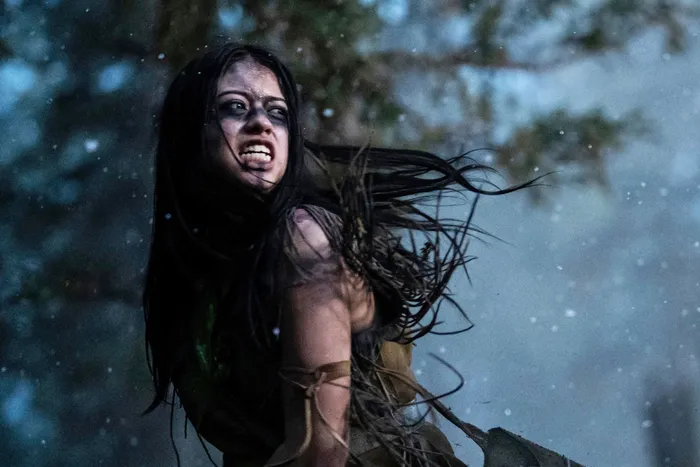Despite four certified-rotten sequels and general audience exhaustion, the Predator franchise is still chugging along. While the 2018 reboot “The Predator” spelled doom for the future of these films, 2022’s prequel “Prey” gives the franchise signs of life.
“Prey” takes place 300 years before the original Predator film set in 1987. The story follows Naru (Amber Midthunder), a young Comanche woman trying to prove her worth by hunting an unknown beast. What she is confronted with is much more menacing than anyone would anticipate.
She is not alone in her quest. As she tries to catch her prey, she is targeted by a group of French hunters seeking to contain the same threat.
The film debuted to critics in July 2022 and made its debut on Hulu soon after. It was immediately successful, becoming the most streamed premiere in the service’s history.
By changing the setting and story, “Prey” is a fresh and solid installment to the franchise. Much of the credit can be attributed to a standout lead performance and some enthralling action scenes in the second half of the film.
“Prey” features a predominantly Native American cast and a particularly impressive performance from Midthunder. Her character is strong-willed, quick-witted and sympathetic. While her previous roles mostly landed on television, this film could cement her as an action star. The supporting cast is solid as well, although their screen time is fairly limited.
Native American representation on screen has been a significant issue in Hollywood as seen in films “The Lone Ranger” and “The Ridiculous Six,” but “Prey” breaks away from those norms.
UCLA’s 2022 Hollywood Diversity Report found that Native American actors comprised 0.6% of film roles in 2021. Furthermore, they played the main character in just 0.4% of those films.
In this film, the Native American characters are not reduced to generic stereotypes or pushed to the background. “Prey” signifies a step forward in representation in a genre that has been largely exclusionary. It is refreshing to see a bona-fide action film with an underrepresented crew receiving a well-earned spotlight.
The Native American talent extends outside of the screen too. Jhane Myers, a member of the Comanche and Blackfoot nations, produced the film. This is the tenth project she has produced, but certainly the biggest of the bunch.
Beyond the cast and crew, the story is executed well.
While the scale of other Predator films became too big for its own good, “Prey” keeps things simple. The plot is straightforward and the characters’ motivations are clear.
The film takes a while to reintroduce its iconic character, focusing more on Naru and her brother Taabe (Dakota Beavers) as the story unravels. The two actors develop a convincing brother-sister dynamic that centers the film. The first act is rather slow, but it establishes stakes and fleshes out their world.
The pace of the film picks up significantly at the half-way point. Predator is teased throughout, until he begins to confront the humans. After that, there is plenty of carnage and excitement for the action and sci-fi fans out there. The third act in particular shows where most of the budget went. These later scenes are surely worth the price of admission – or the price of a Hulu subscription.
This should give incentive to the filmmakers behind the Predator franchise to take more creative risks and expand their reach.
With November being Native American Heritage month, “Prey” is one of the better action films this year, and a significant cultural object that showcases the talents of indigenous actors and creators.







